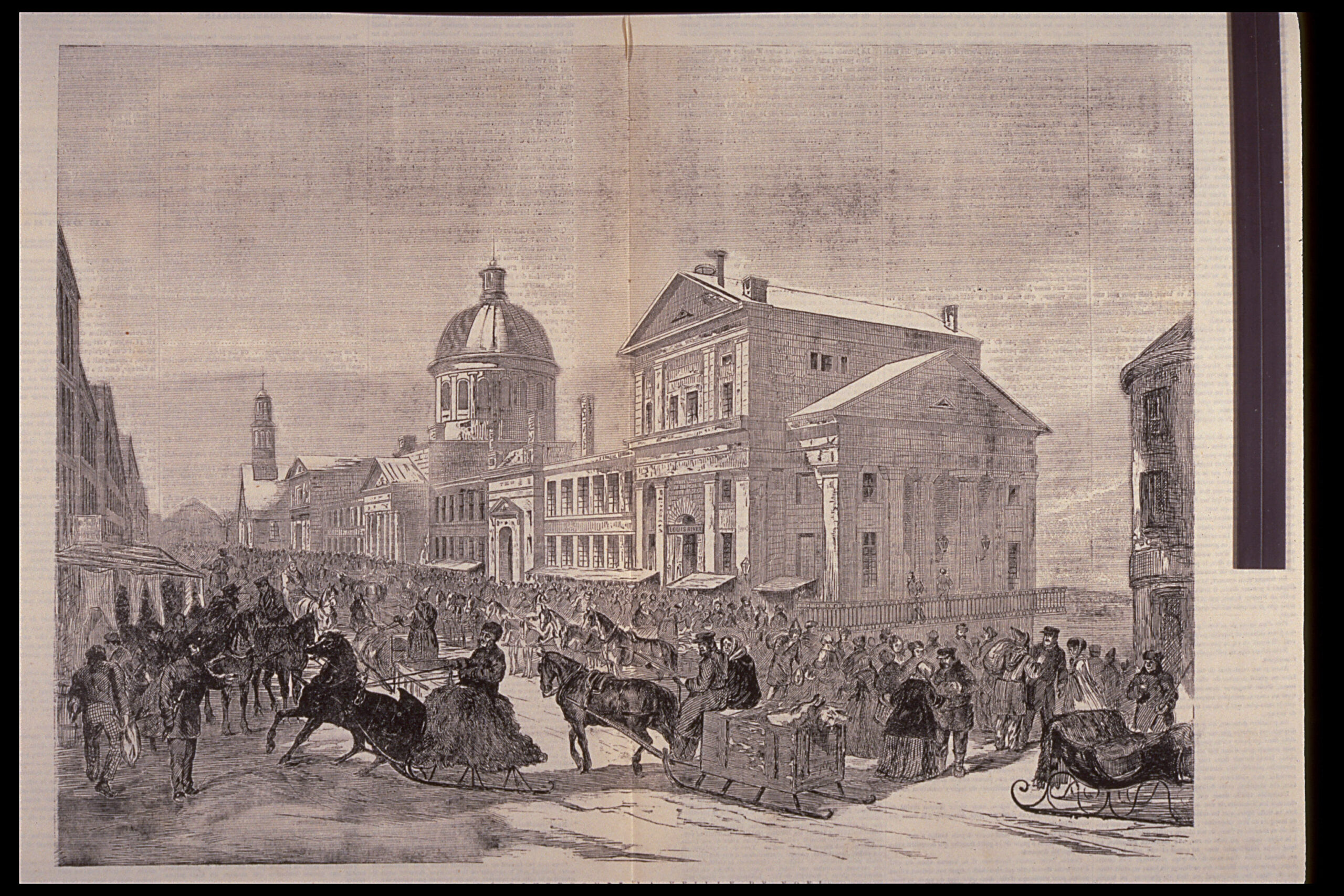Jacques Viger was an active and respected man in Montréal. A road inspector and amateur historian, he knew everybody. Let’s imagine a day in the life of someone who knows all the secrets of his small town…

This morning, Viger is heading up Bonsecours Street. His view is no longer blocked by the hill of the citadel. The hill was razed last year to extend Notre-Dame Street to the east. He turns right on this street to visit John Molson, the brewer. Together, they walk along the pier near the brewery. The Accommodation, the colony’s very first steamboat, has just returned from Québec City. An important visitor has arrived in town, the English novelist Charles Dickens. He will be presenting a play at the Theatre Royal, a huge event for this small colonial town.
Viger offers to introduce the city to this illustrious visitor. Back in 1745, Montréal was a fortified city; today (in 1820) the walls have been demolished. Dickens learns that Montréal now has 20,000 inhabitants in the old city and in the suburbs.
The suburbs that did not exist in 1745 are now the neighbourhoods of artisans and unskilled workers. Land in the city has become too expensive for them. These poorer individuals can only afford to build a small wooden house on a small lot in a suburb. The houses in the city have to be made of stone.
The city has also extended up the sides of Mount Royal, where a few rich Montrealers like the Platts, the McCords and the McTavishes have built their villas. Viger and Dickens climb Mount Royal to enjoy the superb view of the city over a picnic. Along the way they admire the former Sulpician fort, which was built on the mountain in 1685.
In 1820, Montréal is more developed than it had been in 1745. For example, docks have been built along the St. Lawrence River; but it is not yet an industrial city. It is a city of commerce, warehouses and garrisons.
After lunch, Viger and Dickens head back down to the city. It is market day. They are surrounded by farmers from the nearby countryside who bring their products to this new market, which was opened in 1803. At the top of the Marché-Neuf (new market in Place Jacques-Cartier), Dickens admires the column erected in honour of Admiral Nelson. After purchasing a few provisions for Mrs. Viger, they return home for dinner. After a fine meal, they head over to Champs de Mars, where there’s a military parade and music. This is the favourite gathering site of Montréalers; a place to see and be seen. Jacques Viger is proud to introduce his guest to all of Montréal society.
Author: Léon RobichaudSee also – Traces of the past:





